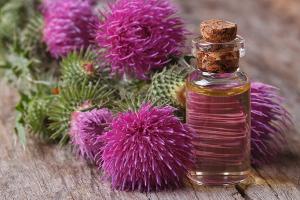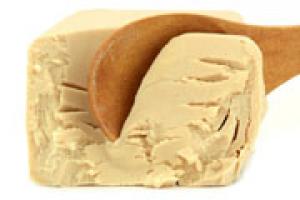The now popular foamiran is sold in sheets and is relatively inexpensive. We will figure out how to work with this material and make beautiful flowers out of it.
What is foamiran
Foamiran is a plastic suede originally brought to us from Iran and created by FoamIran. This material is convenient because it is sold in sheets from which you can cut anything, it is well painted in any color (and its own palette is very large), but most importantly, it lends itself well to heat treatment on the iron. Heated foamiran can take any desired shape.
Foamiran is of different thicknesses. Thin material is used to create flowers and small crafts such as jewelry and hairpins, toys and large-scale crafts are made from thicker ones.
To create flowers you will need:
- Foamiran of various colors (red, yellow, pink, lilac and necessarily green),
- A small piece of foil
- Iron,
- Piece of paper
- Scissors,
- wire,
- glue.
Rose from foamiran
Perhaps the easiest way to make a rose from foamiran.
- Print from the Internet or draw two identical rose petals, but in different sizes. Cut patterns.
- Cut from foamiran 5 petals of different sizes. Each gently lean against the iron and slightly pull the wide side so that it takes the form of a real pink petal.
- Roll a small ball from foil. Wrap one of the small petals around the core, glue the rest around the edges to make a bud.
- Paste around the bud with large petals around the circumference.
- Insert the wire into the rose, cut the leaves from the green foamiran, bring it to the iron, glue to the wire.
Similarly, you can make, for example, a chamomile from foamiran in two shades of yellow.
- For the core, you need a strip 27 cm long and 3 cm wide with 2 cm strips, and for the petals, circles with a diameter of 6-7 cm with figured edges and cut through the petals almost to the middle.
- Roll the strip several times, glue it.
- Lightly treat the petals with an iron and fingers, string onto a wire.
- Insert the core on top, fluff. The flower is ready!
Rose is a beautiful flower, the varieties and varieties of which simply can not be counted. Its delicate aroma cannot be confused with any of the existing flowers. In nature, there are three main types of roses: ordinary (in their bud up to 7 petals), lush double and semi-double flowers (their bud can consist of 15-30 petals). There are also a lot of shades of roses, so the rose is considered a universal and basic flower for creating compositions. On its basis, you can collect a wide variety of bouquets, because roses are combined with almost any color. Foamiran, unfortunately, does not convey the wonderful aroma of a rose, but you can make a beautiful flower out of it, which you can later attach to a brooch, hairpin or use to create wedding bouquets from foamiran or interior bouquets. The whole charm of a rose from foamiran is that it can be of any shape and color, and most importantly it will never fade. In this I will tell and explain with the help of step-by-step photos how to make different types of roses from Iranian or the finest. Let's start MK with a Japanese-style marshmallow foamiran rose.
Master Class: Japanese-Style Marshmallow Foamiran Rose
To create this magnificent rose you will need:
- pink and purple marshmallow foamiran;
- purple oily pastel and sponge;
- lighter;
- second glue;
- tape tape;
- foil;
- an elastic band, a hairpin or fastening for a brooch;
In the photo below you can see the decoration in its finished form.

So, let's start making roses from marshmallow foamiran.
Step-by-step instruction: How to make a rose from marshmallow foamiran?
Just as a theater begins with a hanger, so absolutely everyone begins with a pattern. The photo shows a pattern of a Japanese rose: 3 types of petals (dimensions are indicated in centimeters).

According to the pattern, cut out the petals of our rose. In total, we need 9 pieces of small 5.5 * 6, medium 11 pieces of 7 * 6.5 and large 5 pieces of 7.5 * 7. But during assembly, the amount may decrease, it depends on what magnificent rose you want to make. I want to warn that the marshmallow foamiran tears very easily when stretched, so just in case, make a few spare petals. But I also used torn petals, they give great realism to our flower.
The Japanese rose is notable for its unusual color: the middle is lighter, and the extreme petals are dark. Therefore, we need two types of foamiran. We will make light rose petals from light pink marshmallow foamiran, slightly tinting it in a lilac hue, and for the rest of the petals we will use violet foamiran.

And so I made the petals of pale pink and purple marshmallow foamiran.

We tint all the petals in the same way: with purple oily pastel and blend with a sponge. We apply tinting on top of the petals from two sides.

Then we process all the petals as follows: we fold the top of the petals with an accordion and grind it, release the air a little and thin the top of the petals.

These are the rose petals.

Then we take a lighter and slightly heat the petals every 2-2.5 cm, stretch it by making waves, while slightly deepening the middle, as if making a cup. You can twist some edges of the petals in different directions. Well, something like this should happen.

Take the foil and make the middle of the rose. Who likes to make a middle of the remains of foamiran can be made of it. The size of the core of the rose should be as follows: the height of the cone is 2-2.5 cm., The diameter at the bottom is 1.5 cm.

We take a small petal and wrap the base in it, while one edge with the wave is not fully glued. From below we cut off everything superfluous.

Glue the second small petal opposite, as if closing the spool, but place the petal so that the waves of one petal continue on the other. And again, we cut off all unnecessary from the bottom.

So I glued all the rose petals. In each row of roses are two petals.

We begin to glue the middle petals, placing three petals in a row. Glue on the same level with pink petals. And we start the last petal under the first.

So I pasted the middle petals.

Then we glue large petals, just like the average of three petals in a row in a circle and already close the bottom of the base.

The result was so beautiful. I did not stick the last three petals, I will do this after attaching.

For mounting, I took an elastic band, but you can use any as you wish. If you take an elastic band like me, then you need to choose an elastic band with a plastic or metal mount, or use a special mount for the elastic bands. But I have a rubber band with a plastic mount, so I put glue on this mount and press it against the flower. Then I cut a piece of foamiran and glue it again so that the gum holds stronger.

I cut an additional oval with curly scissors to close our mount.

Glue the remaining three petals and close the mount. That's how beautiful it turned out.

Take two strips of pink marshmallow foamiran. One strip is 5 cm. * 24 cm., The second is 4 * 36 cm. We cut these strips into rectangles 5 * 4 cm in size. -6 pieces and 4 * 3 cm. - 12 pieces.

From the rectangles, cut out the petals in the form of droplets.

Then we take office paper, lay out the petals and cover with another sheet of paper. Then iron it several times on both sides with an iron until the petals are thinned.

Large petals are tinted with buttered red pastel. Fold the accordion and rub between the fingers.

We straighten a little and make a recess in the upper part of the petal.

We fold the small petals with an accordion and also grind, then we straighten and make a deepening. Next, glue in pairs, as shown in the photo.

We take a foil 12 * 12 and make a ball for the base of a small rose.

Glue the ball from foil with petals.

We glue the leaves on one side only.

Then we form the top of the middle and glue the second side and the bottom, cut off the excess. Here's a little bud turned out.

We glue small petals in a circle, with an overlap.

In the middle we glue the bud. The rosette is ready.

Cut the leaves from the green Iranian foamiran and tint them with oil pastel green, and the edges of the leaves themselves pink, well shading with a sponge.

We make notches on the leaves and process it on the iron, at a temperature of silk-wool and squeeze it well on mold.

We fix our little rose on a special clip.

Ready little rose from foamiran.
Foamiran rosebud: how to make?
One of the most common types of roses is bud. How to make a rose bud from foamiran with my own hands, I'll tell you now.
To make a rose bud you will need:
- pink marshmallow foamiran;
- for leaves, green Iranian or any other foamiran;
- universal mold for leaves;
- oil pastel: pink, light pink, lilac, dark pink, lilac, white, light green, yellow and sponge;
- lighter;
- second glue;
- litons No. 26 or 3 mm wire;
- tape tape;
- office paper;
- stick or toothpick;
- foil;
- pieces of any foamiran;
- acrylic glossy varnish;
- iron.
Step-by-step MK for the manufacture of a rosebud
Here is a bud rose you should get. She looks very beautiful in wedding and interior bouquets. We will do the tinting of the bud in a fashionable pink shade.


For rose petals, take three strips of pink marshmallow foamiran. Strip width 3 cm., 5.5 cm., 6.5 cm.

We cut these strips into squares of the corresponding sizes.

From the squares we cut the rose petals in the form of droplets. Small - 10-12 pieces, medium and large 8 pieces. But since the marshmallow foamiran easily breaks during processing, we cut out at least one spare petal of each size.

We tint all the small petals completely, with two shades of oil pastels of pink and lilac, I fantasize with tinting. We apply tinting on both sides, we also tint the end face of the petals.

To tint the middle petals, we have already used five shades of oil pastels: pink, light pink, lilac, dark pink-lilac, white. We also tint on both sides and also tint the end of the petals.

After applying the main shade, tint the bottom of the petal with yellow and light green pastels, blending well with a sponge.

Large petals are tinted as medium. For tinting, we use pink, light pink, lilac, yellow and green oil pastels.

After tinting, apply a texture to medium and large petals. With a stick or a toothpick we draw veins in the form of fluffy twigs.

Then we process all the petals on the iron, that is, iron them on both sides. After spreading the petals on the paper and closing it with paper, iron it several times. Let it cool slightly and remove the petals, which should turn out to be very thin, graceful.

So we process all the petals.

We take a foil of size 30 * 35 and make the base for the rose. The base is in the form of a cone measuring 3.5 * 3 cm.

Then we begin processing the petals. At five small petals, we fold the top with an accordion and gently twist, straighten and stretch them.

The remaining small petals are just slightly stretched around the entire perimeter of the petal.

On the middle petals we make a depression below, then we go around in a circle stretching the edge of the petals by one or two fingers.

Then we process the edges with a lighter and twist them and clamps in some cases.

Fold the upper edge of the large petals with an accordion, grind and make a recess at the bottom of the petals.

We process the edges with a lighter and twist. Fold the petals in half and pull them inward.

We take a small petal, twist it into a tube, drip a drop of glue on the edge, but do not glue the tube, and apply a second petal to the first petal of glue and continue twisting. So twist the five petals. Then we glue the remaining petals to them, forming a rosette.

We take the formed small rose and with the nail scissors we carefully cut out the middle from the bottom. Then, in the cut hole, insert the base of the foil and glue it.

We make a hole at the bottom of the base and insert the wire, gluing it with second glue. And begin to glue the middle petals. Four petals in a row. We glue the last petal under the first. So glue all the middle petals, two rows.

Since the bottom of the base was not made wide enough, we glue a strip of foamiran to increase it and then we begin to glue large petals.

We also glue large petals four petals in a row. Gluing the last petal under the first. This is how we formed a rosebud.

From the green foamiran we cut the sepals, make notches and tint on both sides with oiled green pastel, shading well with a sponge. Along the edges of the sepals we pass slightly with pink pastel.

The sepals are heated on an iron at a silk-wool temperature and fray. We straighten it, heat it with a lighter and make small waves.
From green foamiran we cut out leaves. We also tint them with oiled green pastel and the tips a little pink, blending well with a sponge. On the leaves we make notches.
We process the leaves on the iron at the temperature of silk-wool and on mold, well pressing the texture of the leaves. After applying the texture, the leaves are coated with acrylic gloss varnish twice, so that the leaves of the rose look more realistic.

We dress the sepals on the wire and glue them to the base of the rose. Then we glue each sepal leaf to the top. We process the wire with tape tape.

Glue the leaves on letons. We apply glue to the liton and apply it from the bottom of the sheet, pressing down well with a stick.

Having formed the leaves, we begin to attach them using the tape tape to the stem of the rose.

Here we have made such a rose. Such a rose will decorate any bouquet.
From a surprisingly plastic foamiran, you can create blanks of almost any shape. And the best part is that this material is almost impossible to spoil, it is enough to heat it again and give it the desired shape.
For work you will need:
- foamiran of 2 colors: white and green,
- half a file or tracing paper,
- acrylic paint
- wire cutters
- mold
- a piece of sponge
- foam ball with a diameter of 1.5 mm,
- toothpick,
- floristic wire
- a pen,
- scissors,
- cardboard,
- iron,
- adhesive thermal gun,
- a couple of pieces of paper.
Step 1: Preparatory phase.
Patterns taken from this book for floriculture, author Nadezhda Chereda!

I liked the Camellia pattern.


But the gluing is already from the rose.

I translate on film (you can use tracing paper).


And now I translate it on cardboard, so it’s more convenient to work with.


Circle the toothpick patterns.

We also circle the paste on the green Thomas.

We got: 2 corollas; 2 corollas - b; 3 corollas - in; gluing; 2 stripes of Thomas and 2 leaves of arbitrary shape.

We divide the wire into 3 parts.

At the end of the wire we make a loop, but do not bend it completely.

We take a foam ball (diameter about 1.5 cm) and pierce it from above and pull by the wire, the loop should drown in the ball.


Step 2: Tint the petals and leaves.
I took acrylic paint, although I always tint with dry pastel, but I really liked its color. 🙂

Add a little bit of paint to the sheet, as acrylic dries very quickly.

We tint corollas.

Everything is ready, gluing and leaflets can be slightly “browned”.

Now all the corollas need to be cut before reaching the center, for small 5-7 mm, for medium 7-8 mm, for large 1 cm.

Step 3: Heat treatment, form the petals.
Heat treatment, we start with small ones, one petal to the iron, quickly on the right palm and press with the thumb into the middle of the petal.

This is how you need to be pressed, but in the palm of your hand, you couldn’t physically show, the second hand is busy with the camera. 🙂

And we heat the middle petals one at a time and holding the petal with both hands from the edges, stretch it a little and push it with our thumbs into the middle, we should get a boat and quickly turn it upside down, continued further ....

As they turned it over, we also hold the petal with both hands and quickly, simultaneously twist it on both sides, and then turn the top.

Corollas are ready!

Now we heat the gluing on the iron and collect all the “rays” into a heap, then jam.

To print a leaflet, we need a mold, this thing remarkably mimics the structure of a leaflet. You can buy it in the departments with goods on ceramics.
We heat the leaf, apply it to the mold and press it.

Everything we did is wonderful! Now everything is ready, it remains only to collect the rose!

Step 4: Collect the flower.
We pierce the middle of a small corolla.


We are armed with a glue gun. And the first petal should be glued just like that, with a cone, the hole from the top should be tiny.

The second is the opposite. The third and fourth, respectively, are opposite each other.


We pierce the second whisk.

Glue in a spiral, turning the petal behind the previous one.

Be sure to twist the edges with your fingers, give it vitality until the flower is collected, this can be done easily.

The next whisk, just like the previous one.


So it turns out.

Do not forget to tighten the petals.

Petals are located in the gaps of the previous row.

The last three corollas with 5 petals, also in a spiral glue one after another.

And finally, the last whisk is put on the wire, you can pinch the petals by holding your fingers.

This is how the "ass" of the flower should look.

We bite off the wire so that there would not be a hint of it, not a tiny little stump sticks out.
We glue the glue, four rays can be glued, the fifth while floating in the air.

We wrap the wire with a fom, we get a leton.


We need to make 2 of them, according to the number of leaves.
We put the sheet with the impression down, gently smear the summer with hot glue and glue it to the middle of the leaf, retreating from the nose of the sheet 0.5 cm.

That's what our leaflets look like!

We do not need long stems, wrapping a foma strip, we fix (glue) both stems and bite off the excess with nippers.

Under the non-glued “little ray”, we palm off our leaves and pierce the middle of the flower with wire, insert the leaves previously smeared with glue.

Now, whoever likes what, brooch or hairpin!

I have a brooch, I glue the workpiece under the beam and cover it with the beam. Everything is ready!

That's what we got!


Thank you all for your attention!
Creative success in creating flowers! I will be very glad to see photos of the work done in this master class!
Roses made of foamiran (plastic suede) are fashionable and relevant decorative elements for creating jewelry, hair ornaments, grabs for curtains, topiary, dubbing of bouquets for brides. Material for making flowers, as well as special tools, are easy to purchase at any store for needlewomen. In this article, you will learn how to choose a plastic suede to create the most realistic plant. What tools will be needed to make a beautiful rose from foamiran. A step-by-step description will help to create a flower even for beginners in this field. Try to plunge into the exciting world of artificial floristry.
Name Options
Foamiran, fom, leather or plastic suede are all the names of the same material, which can vary in thickness. There are also the names of Fomieran, "Eva Foam", "Fom Eva." The homeland of the material is Iran.
Types of foamiran
There are such types of foamiran:
- plastic suede of the company "Foam Eva" Iranian production. Available in the form of squares 60 by 60 cm. Material thickness: 1 mm. Iranian fom is considered a classic among other species. It is easy to work with it: it does not cringe during heat treatment. It keeps its shape perfectly even after several years. Please note that the sheet of Iranian foamiran can vary in thickness from 0.6 to 1 mm. This is the norm.
- Turkish foamiran. Differs from Iranian more meager palette of colors. The sheets have a uniform thickness of 1 mm.
- Chinese review. Not suitable for creating flowers. Sheets have a thickness of 3-4 mm. Dolls and other crafts are made from it. Great material for children's creativity.
- Chinese-made marshmallow fom (silk). Very thin up to 0.5 mm. It can not be treated with heat, while it shrinks. It keeps its shape poorly, so wrapped rose petals are likely to unwind after a while. Great for creating delicate and transparent buds, such as cherry blossoms or apple trees.
- Foamiran Iranian marshmallow. Porous and airy material about 1 mm thick. In its raw form it is used for flowers with fleshy leaves, for example, to create realistic succulents. There is a way to make marshmallows fom thinner. Put it between two sheets of paper and iron it. Air will come out of the material and it will become as thin as papyrus.

Rose from foamiran: a master class with step-by-step instructions
In this master class, we will look at how to make a queen of flowers from this gentle material. For work you will need:
- pale pink or white foamiran;
- scissors;
- iron;
- dry pastel (pink and brown colors);
- wire;
- a piece of foil or synthetic winterizer;
- sponge;
- glue gun.
Cut out rectangles of 4x4.5 and 5x5.5 cm from Thomas. In order to get the shape of a petal, cut off their corners, folding them in half. For a lush rose you will need about 25 large and 15 small. For a bud you need 10 small petals. The quantity is approximately given, since the petals may tear during operation. In addition, the master himself regulates the splendor of the flower.

How to make a rose from foamiran more realistic? To do this, you need to tint its petals in order to recreate their natural color.
Dry pastels are best suited for beginners. Even during the first experiment, they will get an excellent rose from foamiran. The master class is designed specifically for such novice masters of artificial floristry.
So, take the petals, a wet towel or a piece of sponge. Draw on it a little paint from pastel crayon and walk along their edges.

Heat the iron to the temperature set in the “wool” mode. Attach a petal to it for a few seconds. The properties of the material are such that it will become thinner and more pliable. Fold it in accordion and scroll between your fingers to let out all the air.

Foamiran rose petals, like natural flowers, have a curved edge. To recreate it, you need to again attach the edge of the workpiece to the iron and wrap it with your fingers. So process all future petals.
We turn to creating the basis for the rose bud of foamiran. Take a wire, a piece of padding polyester or foil. Twist a small ball from any of them. Put it with glue on the wire. From foamiran cut a small square. Pull a ball around them and fix the bottom with a thread or thin wire.
This is the basis for the future rose from foamiran. The next step is attaching the petals. Take the smaller workpiece. Put a little glue on the base of the petal and wrap the ball around it. Get a bud. Take the second petal. Take a look at the seam of the bud. We apply a second blank to its middle. How densely arranged the petals will depend on how much the rose will come out of you. In order to glue the blank, you need very tiny droplets of glue on the sides.
Put them as low as possible. Thus, attach all the other rose petals from foamiran. You can stop at any time and get a beautiful bud. When the small blanks are over, move on to using larger petals.
Next, we need to make a gluing for the roses from foamiran. We do not need templates for this. Cut a square of green material. Pierce a piece of Thomas in the middle with the wire on which the flower is located. Draw with a pencil the outlines of gluing. Remove it and cut it with scissors. Make thin notches along the edge.
Heat the iron. While it is warming, treat the material with brown pastel chalk as described above. Attach the blank to the iron. Roll up the accordion, as you did it with the petals and scroll between your fingers in order to make the material thinner and the type of gluing more realistic. Put a little glue in the middle and attach it to the back. So the rose from foamiran is ready. The master class for beginners is over.
Glue for Thomas
When working with plastic suede, these types of glue are used:
- Hot glue from a special gun.
- Cosmofen. Transparent adhesive of instant action. It is convenient to glue very small parts.
- Clay "Moment".
Molds for making roses
Mold is a device for a detailed study of the texture of leaves and petals of a plant. There are different sizes. It is better for novice masters to purchase a sufficiently large universal mold for sheets. For the manufacture of rose petals at first it is not needed. Their texture is such that it is enough to scroll the workpiece between the fingers.
Tools and materials
For the manufacture of artificial flowers, you may need:
- molds;
- iron;
- glue;
- wire;
- tape tape
- stamens for artificial flowers;
- round pliers;
- nail scissors;
- paints;
- curly hole punchers.
This is not the whole list of necessary materials. With the acquisition of experience, each master adds something of his own to it.
How to tint flower petals
You can tint the petals with these types of paints:
- acrylic;
- oily;
- dry or oil pastels.
Ideas: where to use roses from foamiran
Artificial flowers are used in the manufacture of necklaces, earrings, rims, wreaths, hairpins, elastic bands for hair. The original idea is the use of roses from foamiran in a suite design (bouquets of sweets).
Skilled craftswomen create flowers that at first glance cannot be distinguished from natural ones. Especially appreciated material in wedding floristry. Roses and other flowers from the revolve adorn the arches for the newlyweds. They are put on tables, they are decorated with a wedding procession. Artificial flowers make dubbing of bouquets for brides, which they then throw to their girlfriends.

Material advantages
Foamiran is a soft material that is sold in sheets. As a rule, the palette consists of 20 or 24 colors (depending on the manufacturer). On sale there is foamiran with a thickness of 0.6 to 4 mm. The material is very practical. Products from it are not afraid of water, bright sunlight and deformation. The main feature of Thomas is the ability to stretch and not break at the same time. It can be stretched by 10%.
Making flowers from a revolver is a hobby that can bring a needlewoman not only good emotions, but also a decent additional income. Roses from foamiran are so charming and realistic that there is hardly a female representative who does not like them.
Roses made of plastic suede mesmerize with their beauty, especially if they are made with the soul and are close to the natural color.
There are many ways to create this charming flower with your own hands. But mostly use two. The first is the formation of many petals gathered together. The second - of the five petal parts glued using the “through one” method. In this master class for beginners, a rose from foamiran will be collected in a simpler and faster second way, available for beginners. Step by step photos will dispel all doubts and simplify the work.
Preparation of materials and tools for the lesson
To assemble a charming and at the same time luxurious flower, prepare:
- soft pink foamiran;
- green foamiran;
- thick paper patterns;
- pastel green (two shades), yellow;
- bright pink acrylic paint;
- a piece of sponge or sponge;
- glue gun;
- a toothpick;
- scissors;
- wire;
- food foil;
- iron.
from individual petals, see in our master class on making and for hair. Perhaps you will find time for all the crafts, because they are so beautiful and versatile.
How to make a rose from foamiran
Cut three circles of different sizes from cardboard, these will be patterns for the petals. The diameter of the largest is 9 cm, the middle is 7.8 cm, the smallest is 6.5 cm. Divide the circles into five parts and cut the petals without cutting to the center of about 0.5 cm. Round each sector, turning it into a flower petal.

Use a toothpick to translate the contours into foamiran, outlining the pattern of rose petals.

Cut out for one flower the details of each size. If you make several roses, then cut out the details at once for everything, this will save time.

Naturalness of a rose from foamiran can be given if the petals are painted. This can be done with pastel or acrylic paints. To paint with pastel is much easier, but it is not always suitable for this, sometimes only acrylic paints can give brightness and color saturation.
Paint can be used both in finished form and slightly diluted with water. But add water literally with a drop.
Take a piece of sponge, dip in paint, discard excess on paper. In abrupt movements, slightly touching the foamiran, apply pigment to the petals. Pay particular attention to the tips (they should be toned stronger). Leave to dry. Then color the other side, as in a step-by-step photo.

Heat the iron and begin to form the petals, as in the manufacture. Attach one petal to the iron and with your fingers, with stretching movements, give a bulge (left view). Then twist on both sides (right view).

Shape all of the foamiran blanks to assemble the rose.

To form a bud, you can make individual 2–4 petals. But this is optional.

From a food foil (suitable for chocolate) make a cone, stick a stick in it.

Glue the first petal.

Glue the second one from the opposite side so that the foil is not visible.

Take a small part, put on a toothpick.

Glue on the base.

Now put glue on the petal according to the “through one” technique, that is, glue the first, third, fifth, second and finally the fourth petal.

The first row is formed.

Plant the second.

Glue all the petals in the same way as the previous ones.

Add splendor to the rose with the last large detail from foamiran.

You can make any shape of a rose by varying the number of details:
- one of each size, as in this master class;
- take one small, two medium, one large;
- use one small, two medium, two large.
In each of the options, a do-it-yourself rose from foamiran will have its own unsurpassed shape.
Cut out a five-petal backing from green plastic suede.

If the tone of the material does not fit, it is not scary, it is still necessary to toned it and give vibrant leaves. Paint the backing first with dark green pastel, then bright green and yellow.

Make small cuts with nail scissors.

Heat the workpiece on the iron, trace the veins with a toothpick on a warm foamiran.

Heat the tips of the leaves and pull them out.

Replace the toothpick with wire. Seal the junction of the rose and the wire with glue from the gun to create an elevation. Glue the leaves.

Close the wire with a green teip. The shade of a rose and overall appearance depend on the coloring of foamiran.


According to the provided pattern, it is easy to make unbroken buds for a bouquet. You can choose another shade and tint a little differently - using a pastel, paint only the tips of the petals.


Realistic foamiran rose perfect for hair clips, hoops, brooches. Take a look . Today, this needlework is very popular and loved by women of all ages.
We hope to see you in the groups of our site in VK and OK. Learn about new publications and see what beauty other members of the communities create with their own hands.








